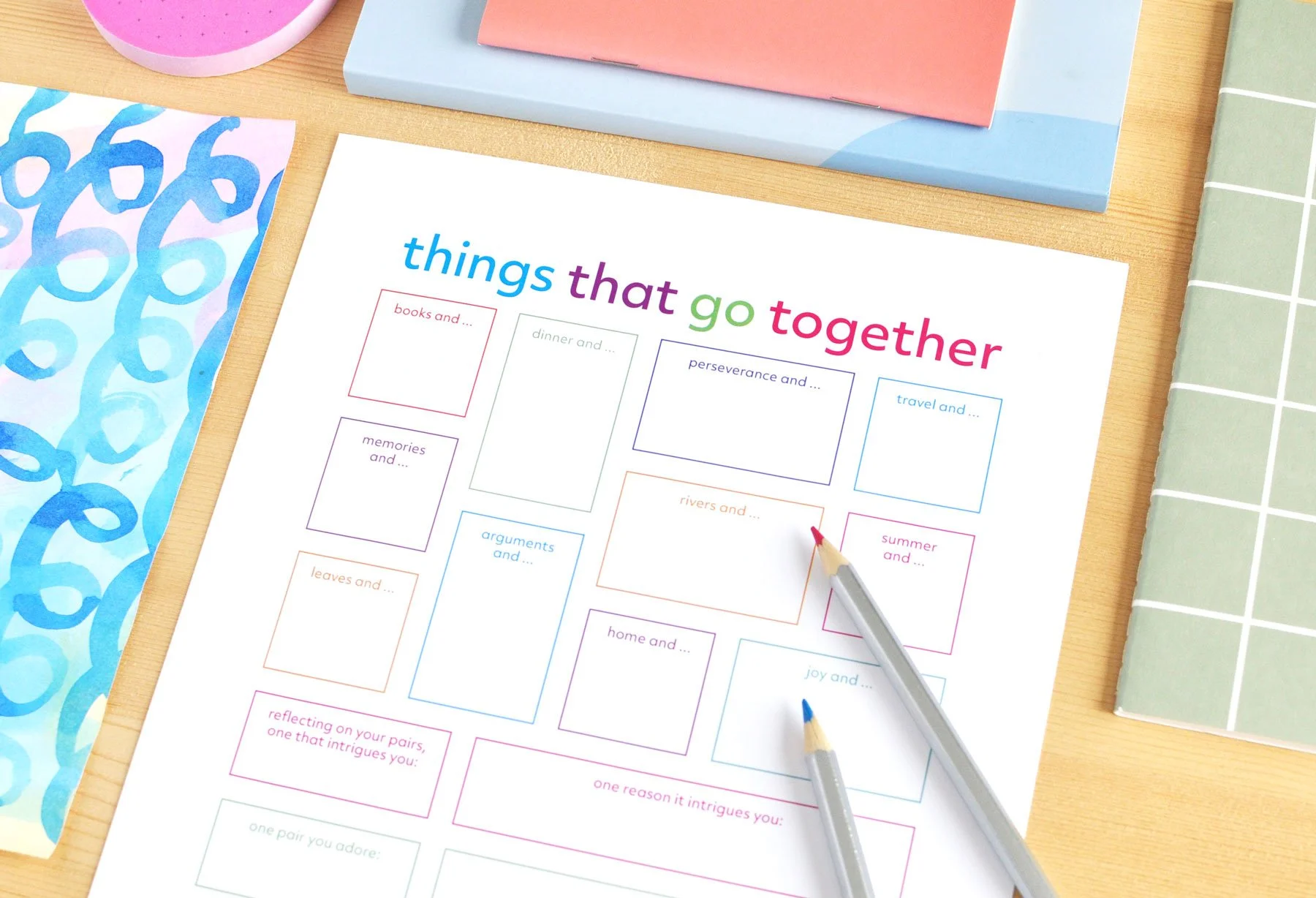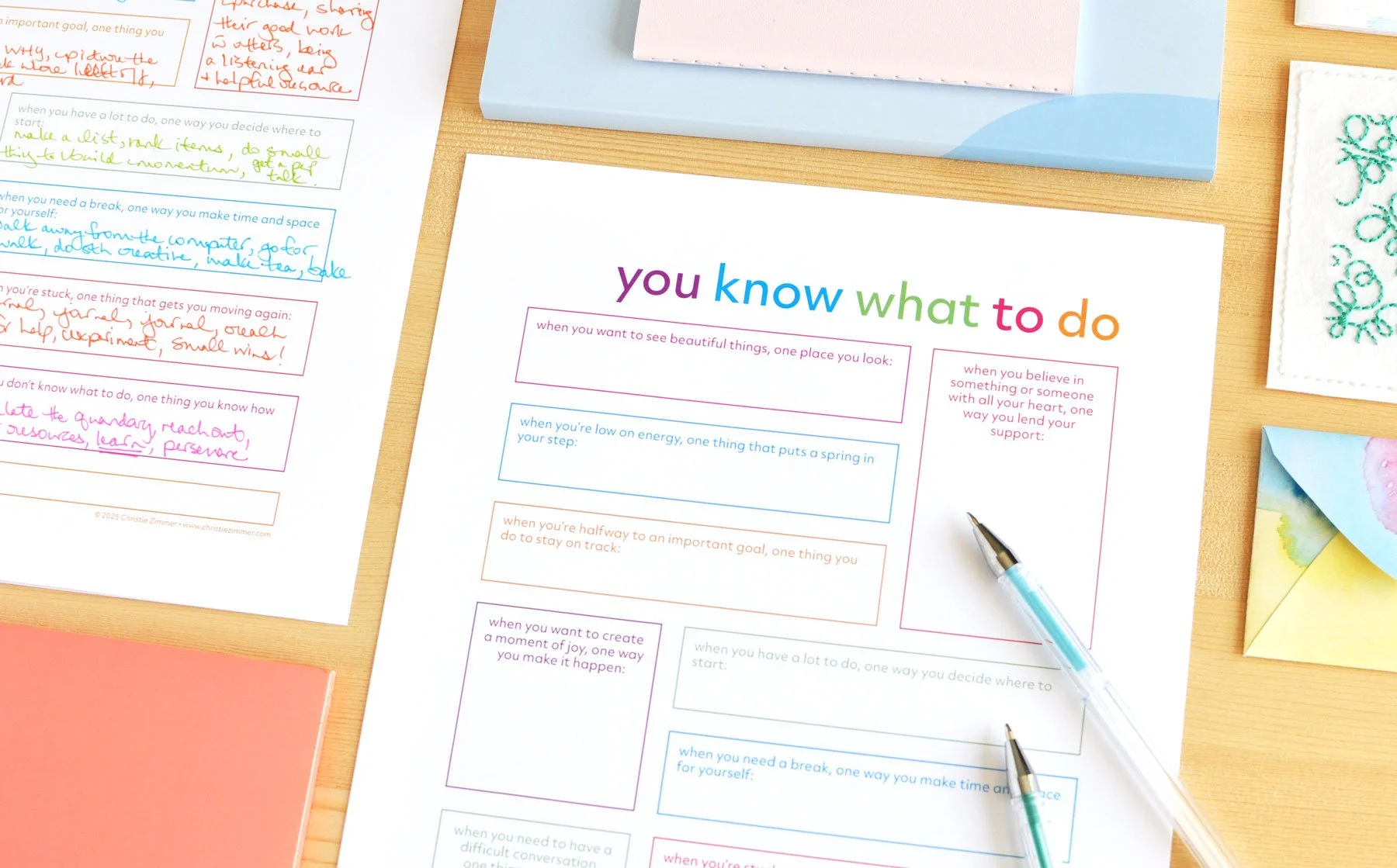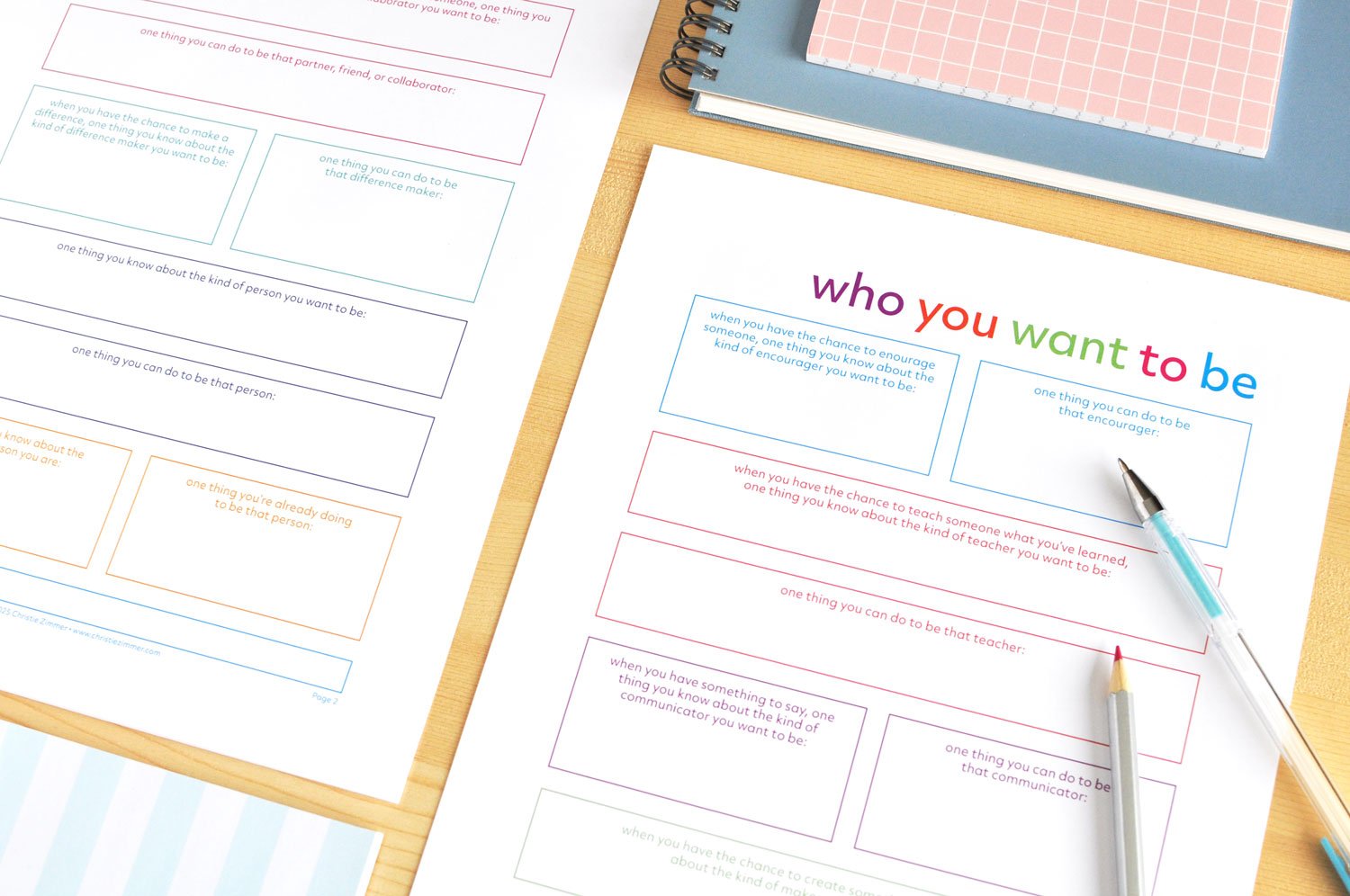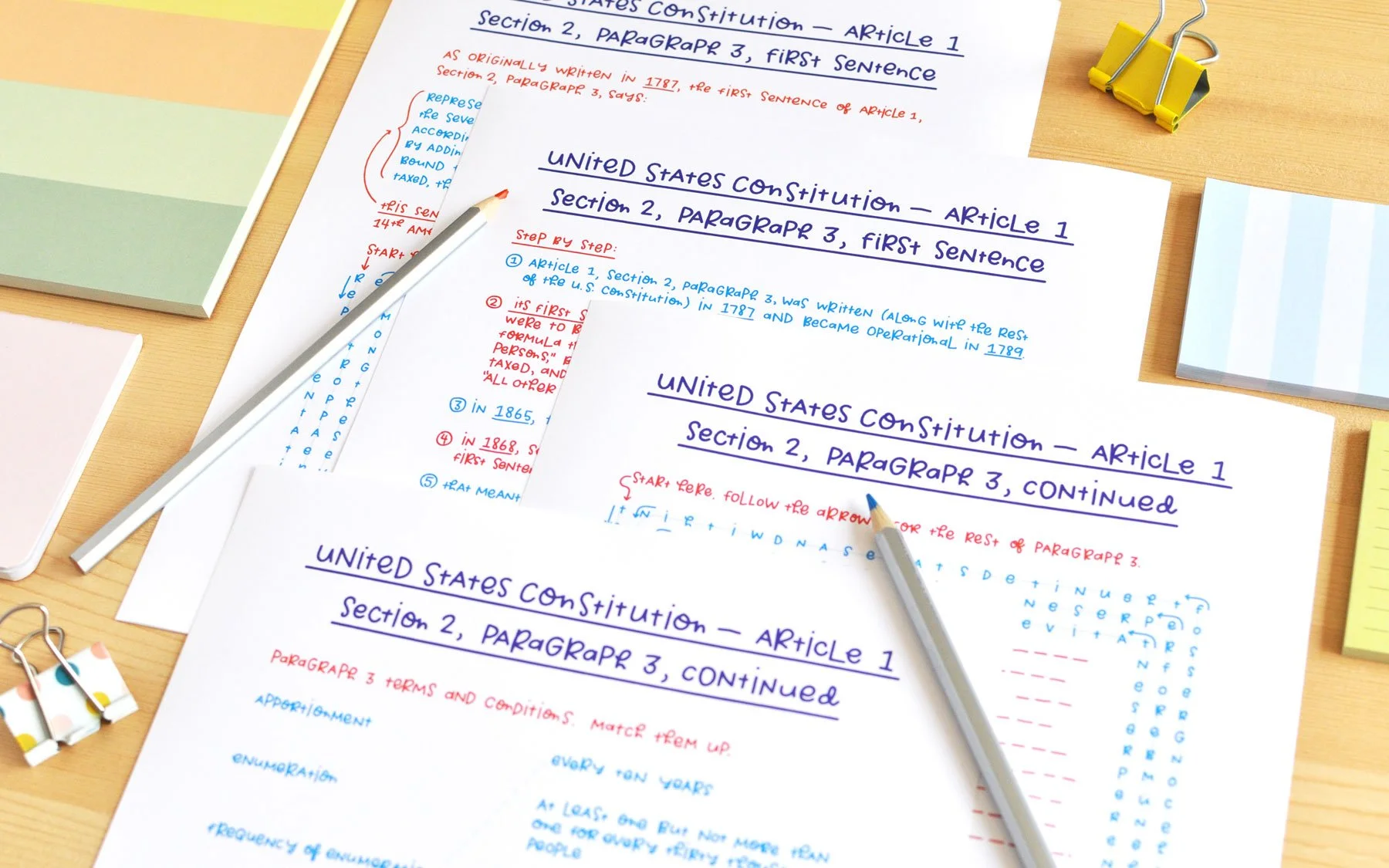At first glance, it may seem like an odd exercise — a journal page inspired by things that go together. But you can make all sorts of surprising discoveries when you look at everyday objects and experiences via the things that come with them. It’s kind of like word association with intention.
I made the page in two parts: the top half for putting things together and the bottom half for making sense of the resulting combinations.
It took me a minute to figure out how best to journal it.
The first thing I noticed was that my first answers mostly didn’t work. Getting to meaningful associations involved writing a succession of words into almost every answer box. It was like trying different puzzle pieces until one fit, but when it finally did, there was that wonderfully satisfying feeling of “Ah, that’s the one”.
For example, under dinner and, I first wrote dessert, which didn’t reveal anything useful or exciting. Then, I pictured the previous night’s dinner and wrote conversation, which felt much better. Then, finally, together time. Ah, that’s the one. The best part of my day. The thought of dinner tonight with my favourite people makes me smile just thinking about it.
I had a heck of a time with memories and. The prompt evoked an unsettled mixture of memories. I wrote nostalgia, then after a long while, deep breaths. I think I actually took a deep breath just then and with the exhale came storytelling. Ah, that’s the one.
The most surprising answer emerged with joy and. I’m not going to share it, but it had a lot to do with finding joy amidst uncertainty. I will also say I was glad it was the last prompt in the top half of the page. By then, I felt super confident with my pairs, and words were flowing out of me.
I wrote more about my joy pair in my journal and thought a lot about where my unexpected discovery might take me. I can’t wait to put some new ideas into action and see what happens!
Want to explore some of the things that go together in your world? Click here or on the image above to download this page.










